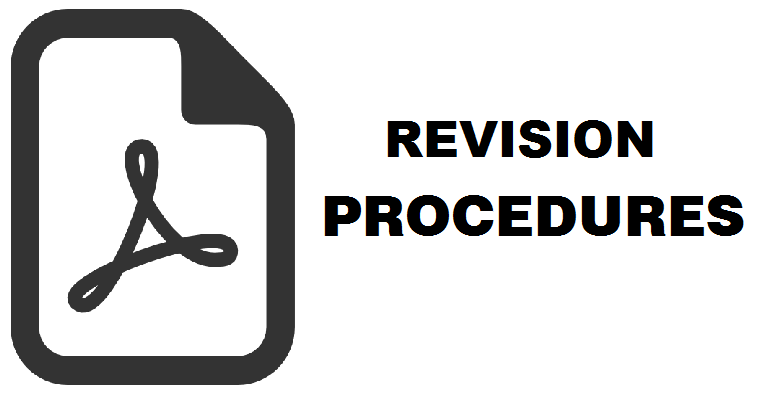Penggunaan Data Penginderaan Jauh dan Sistem Informasi Geografis untuk Pembuatan Prototipe Perangkat Lunak Simulasi Penyebaran Kebakaran Hutan
Agung Mulyo Widodo(1*), Dulbahri Dulbahri(2), Hartono Hartono(3)
(1) Fakultas Ilmu Komputer, Universitas Esa Unggul
(2) Fakultas Geografi Universitas Gadjah Mada
(3) Fakultas Geografi Universitas Gadjah Mada
(*) Corresponding Author
Abstract
Telah didesain dan disusun prototipe perangkat lunak model interaktif kebakaran hutan, yang dapat memberikan skenario terjadinya kebakaran hutan dengan masukan berupa lokasi titik api (hotspot) dan keluaran berupa informasi lokasi penyebaran kebakaran, luas kebakaran, waktu simulasi yang diperlukan untuk mencapai luas kebakaran serta kecepatan penyebaran kebakaran. Prototipe model interaktif ini dibangun dengan mendefinisikan suatu satuan perluasan eskalasi kebakaran (FirePixel) yang mewakili granularitas data riil lapangan sebesar 400X400 m, letak (posisi geografis) dan luasan pengamatan simulasi kebakaran yang dapat dikustomisasi (disetting) oleh pengguna secara interaktif dengan asumsi kondisi pada sebuah satuan perluasan eskalasi kebakaran atau Fire Pixel diasumsikan homogen dengan parameter konfigurasi vegetasi, kelerengan, sebaran gambut, sebaran batubara sebagai faktor internal dan faktor eksternal yaitu faktor tetangga terdekat, kecepatan dan arah angin, temperatur rata-rata, kelembaban rata-rata dari simulasi dapat dikustomisasi secara interaktif pada saat simulasi. Dalam perhitungan proses kebakaran dan proses pemadaman kebakaran hutan didefinisikan faktor percepatan proses kebakaran yang merupakan akumulasi dari faktor internal dan eksternal yang secara langsung mempengaruhi kecepatan terjadinya proses kebakaran dan pemadaman kebakaran hutan. Perubahan fase kebakaran diperoleh melalui pemodelan matematik dari faktor internal dan eskternal mulai dari fase mulai terbakar sampai kebakaran padam. Hasil validasi prototipe diperoleh kebenaran yang dapat diterima dalam perhitungan statistik menggunakan Uji Kolmogorov-Smirnov Dua Sampel. Hasil skenario 1 menghasilkan nilai KD hitung (=1,5722) < KD tabel (-1,9176) dan skenario 2 menghasilkan nilai KD hitung (=1,36) < nilai KD tabel (=1,5722).
It has been designed and structured software prototype interactive model of forest fires, which can provide forest fire scenario, input is the location of hotspots and the output of the location information spread of fire, extensive fires, the simulation time required to reach the area of the fires and speed of fire deployment.The prototype interactive model is built by defining an expansion unit escalation fire (FirePixel) that represent real data granularity field of 400x400 m, position (geographical) and the extent of the fire simulation observations that can be customized (be set) by the user interactively by assuming the conditions in a expansion unit escalation of fire or fire pixel assumed homogeneous with the parameters : configuration of vegetation, slope, the distribution of peat, coal distribution as internal factors and external factors that factor nearest neighbors, wind speed and direction, average temperature, average humidity of the simulation can be customized interactively during the simulation. In the calculation of the fire and the fire fighting forest, fires the acceleration factor is defined as an accumulation of internal and external factors that directly affect the speed of the process of extinguishing fires and forest fires. Fire phase change obtained through mathematical modeling of internal and external factors ranging from phase start to burn until the fire goes out. Prototype validation results obtained acceptable truth in statistical calculations using the Kolmogorov Smirnov Two Sample. Results 1 scenario produces KDcount value (= 1.5722) <KD table value (-1.9176) and scenario 2 yields the KDcount value (= 1.36) < KDtable value (=1.5722).
Keywords
Full Text:
PDFReferences
Abaco, (1999). User guide DbCADdev, Abaco. Cormen, (1992). Introduction to Algorithms, The MIT Press., Massachuset.
Finney, Mark A., 1998, “ FARSITE : Fire Area Simulator-Model Development and Evaluation”, US Forest Service, diperoleh 20 Janurai 2015.
Jones, D.W, (1999). Simulation Pending Evenst Set Algorithm. University of Iowa Department of Computer Science.
Jensen, J.R., (1996).Introductory Digital Image Processing, a Remote Sensing Prespective”, second edition, Prentice Hall, NJ 07458.
Kusumawardhani. A., Cordova H, Widodo A.M., (2000).The Prototype Development of Forest Fire Danger Rating System Information (FDRS)”., Joint Project of ITS and BPP Technology (No:11/SPK/PPTISDA/BPPT/IX/1999-2000).
Kusumawardhani., Cordova H., Widodo A.M. , (2000).The Modeling Of Forest and Land Fire Rating Danger Based On Remote Sensing Data and Geographic Information Systems (A Case Study The Pontianak Surrounding) “, Domestic Collaborative Research Grant (DCRG).
Law A. M., Kelton. D, (1999). Simulation Modelling & Analysis, Mc Graw hill, Inc, New York.
National Wilfire Coordinating Group., April (2006). National Wildfire Coordinating Group Fireline Handbook, appendix B : Fire Behaviour, diperoleh 11 September 2015.
Oakley C.O, “Analytic Geometry”, Barnes and Nobles Books, USA.
Prasasti I., Parwati E., (1995). Proceedings Peretemuan Ilmiah Tahunan ke 5 Masyarakat Penginderaan Jauh (MAPIN), Institut Teknologi Sepuluh Nopember.
Rakor SIGNas VI, (2001). Panduan Pengembangan Sistem Informasi Geografis, Rakor SIGNas VI , Bandung.
Reeves W.T, (1985). Approximate and Probalistic algoritm for shading and Rendering Structured Particle System”, Computer Graphic, vol. 19, no. 3, pp 313-332.
Swain, P., (1978). Remote Sensing The Quantitative Approach”, Mc Graw Hill, Inc.
http://www.vadscorner.com/haze.html, diperoleh 18 Juni 2015
http://www.iffm.org/Indonesia/index.html, diperoleh18 Juni 2015
http://www.iffm.org/hsmap.html, diperoleh 18 Juni 2015
Article Metrics
Refbacks
- There are currently no refbacks.
Copyright (c) 2017 Majalah Geografi Indonesia

This work is licensed under a Creative Commons Attribution-ShareAlike 4.0 International License.
Volume 35 No 2 the Year 2021 for Volume 39 No 1 the Year 2025
ISSN 0215-1790 (print) ISSN 2540-945X (online)








